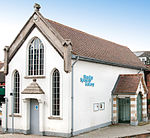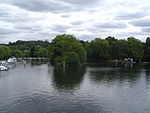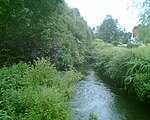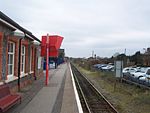Cookham Abbey
8th-century churches in the United Kingdom8th-century establishments in EnglandAnglo-Saxon monastic housesBerkshire building and structure stubsBuildings and structures in the Royal Borough of Windsor and Maidenhead ... and 6 more
Christian monasteries established in the 8th centuryChurches completed in 726CookhamEnglish church stubsMonasteries in BerkshireUnited Kingdom Christian monastery stubs
Cookham Abbey was an Anglo-Saxon monastery in Berkshire, England. It was established by 726.
Excerpt from the Wikipedia article Cookham Abbey (License: CC BY-SA 3.0, Authors).Cookham Abbey
Ferry Lane,
Geographical coordinates (GPS) Address Nearby Places Show on map
Geographical coordinates (GPS)
| Latitude | Longitude |
|---|---|
| N 51.561126 ° | E -0.707551 ° |
Address
Ferry Lane
SL6 9SN
England, United Kingdom
Open on Google Maps










